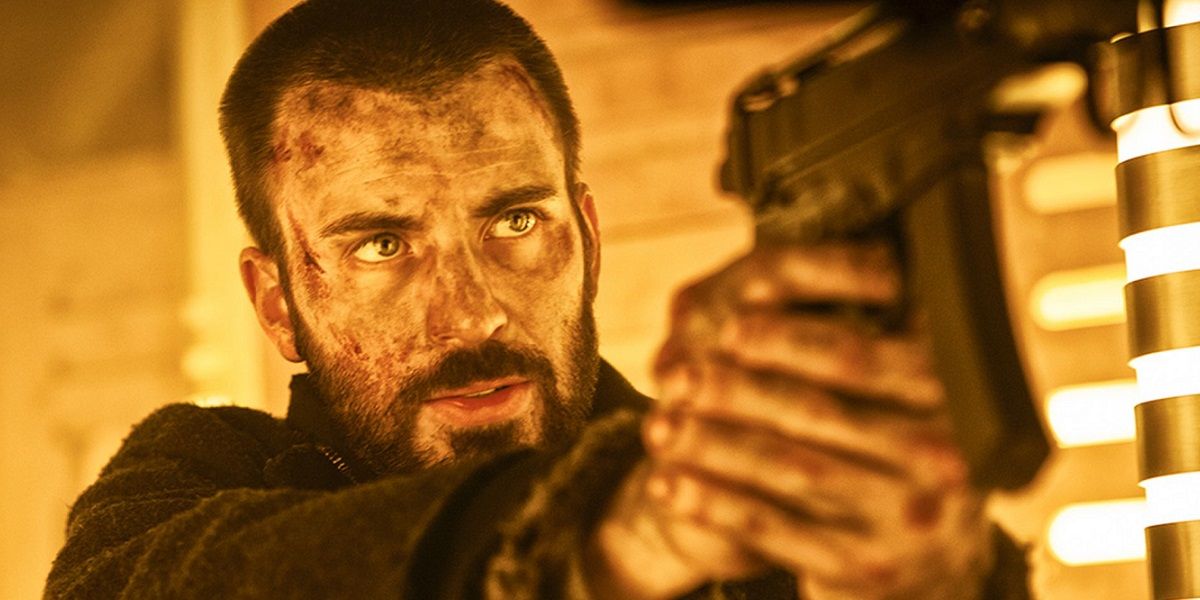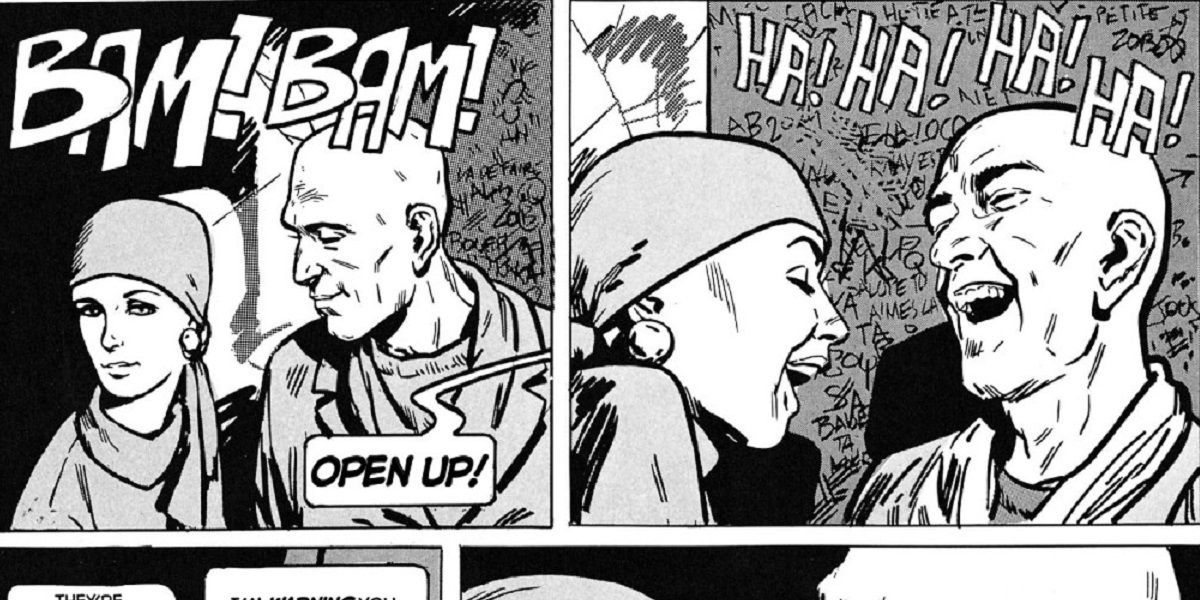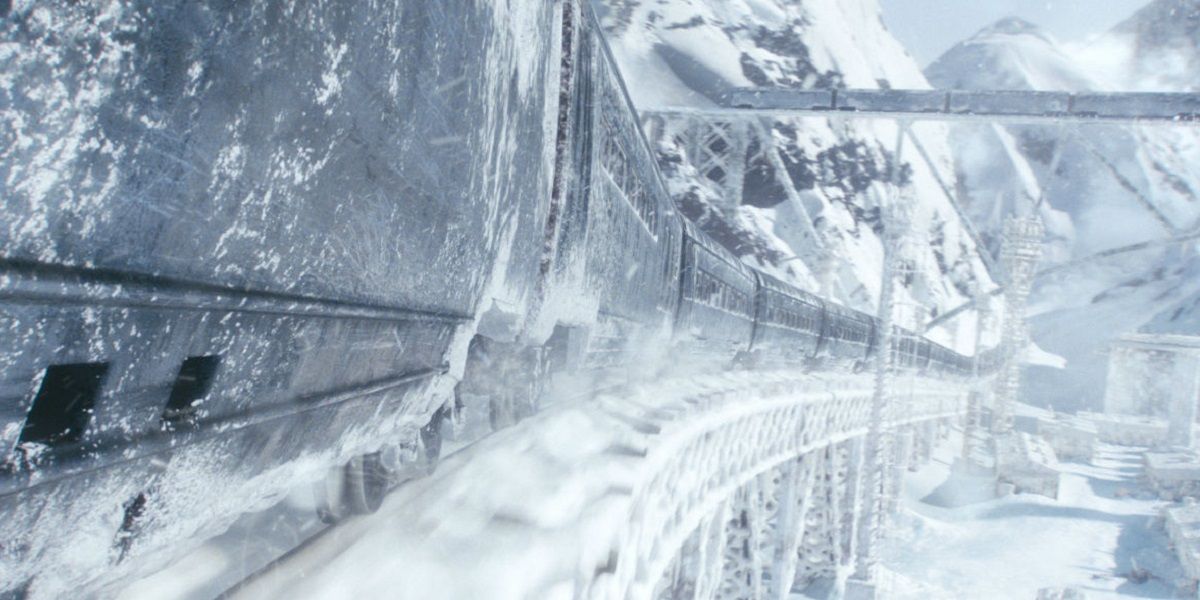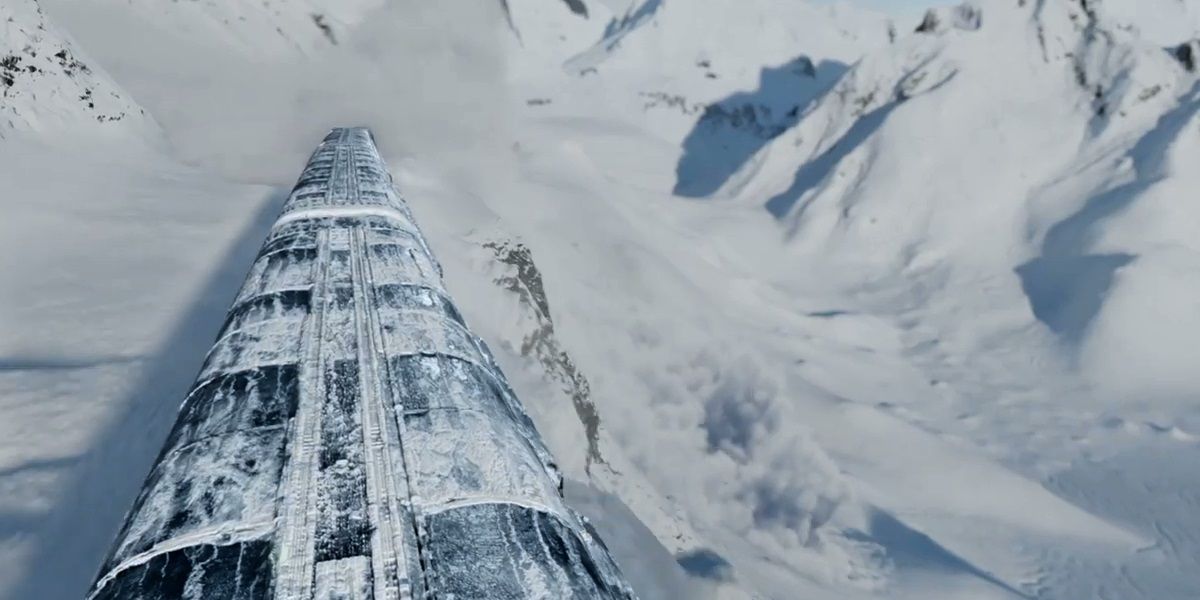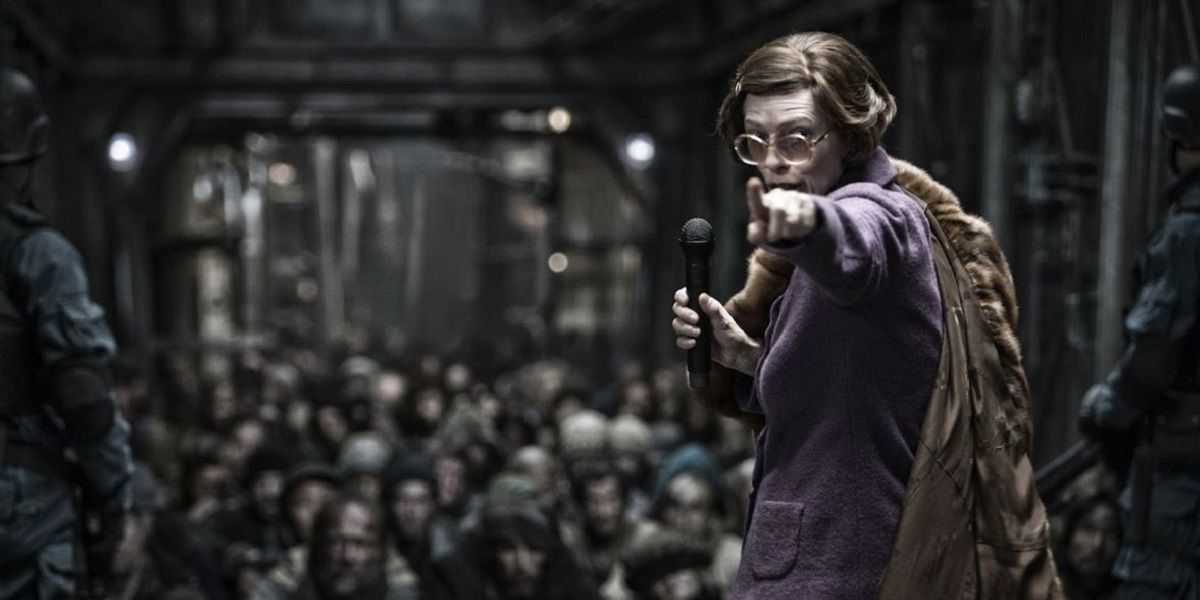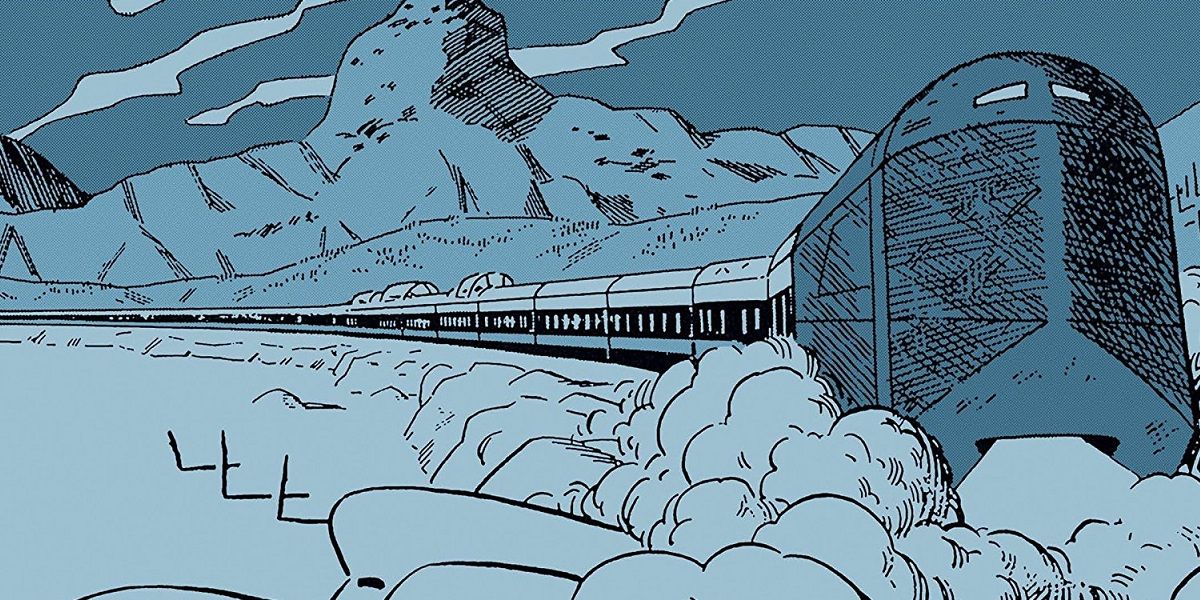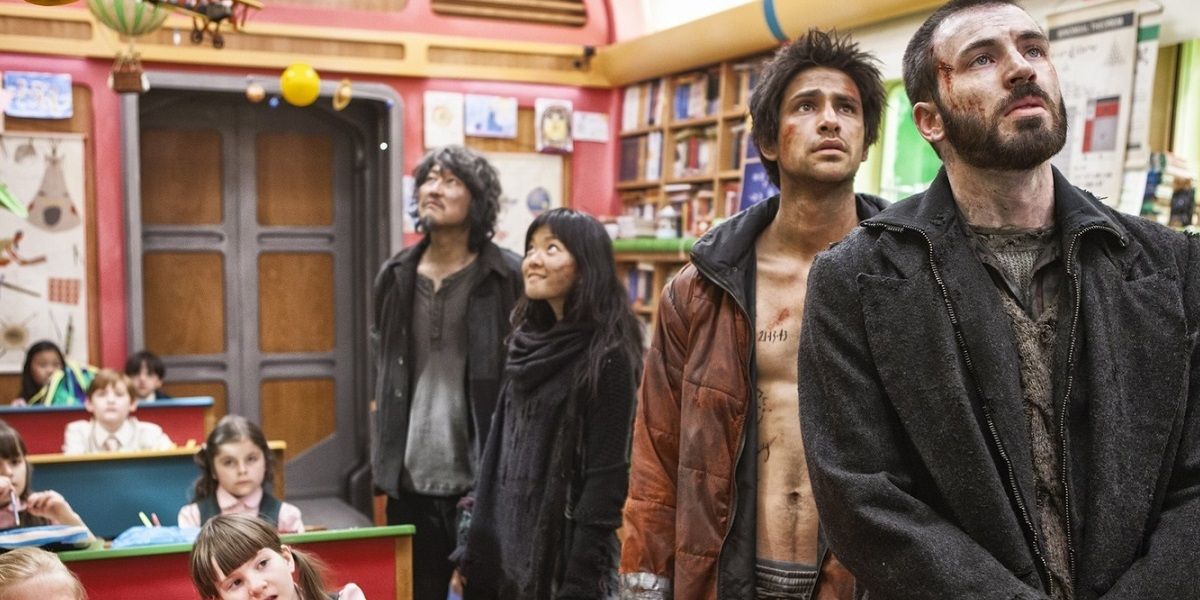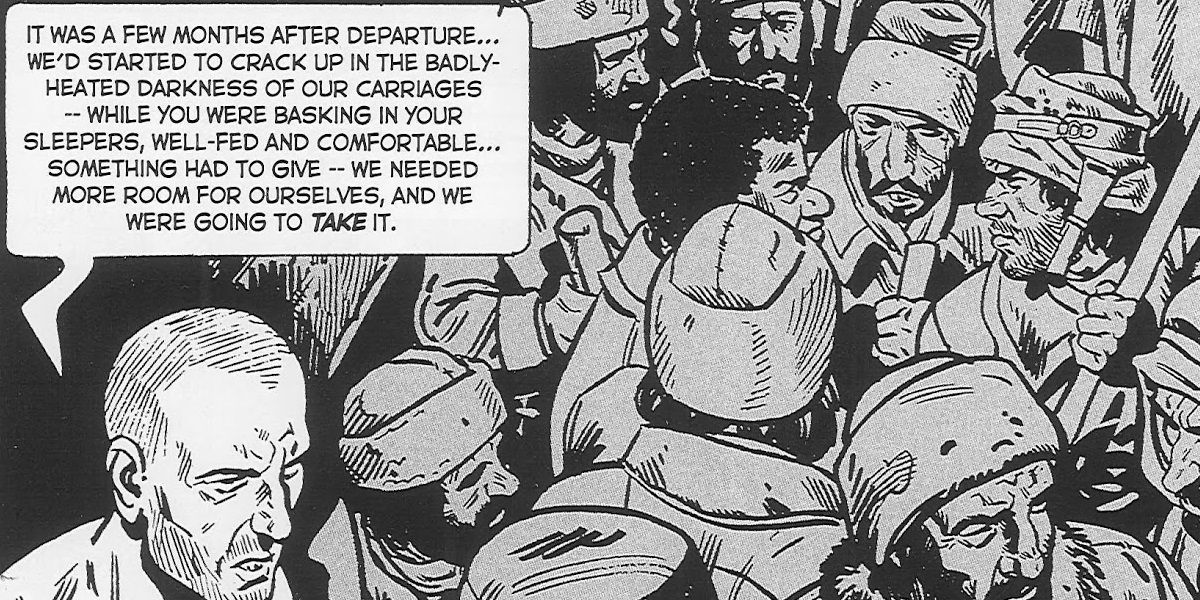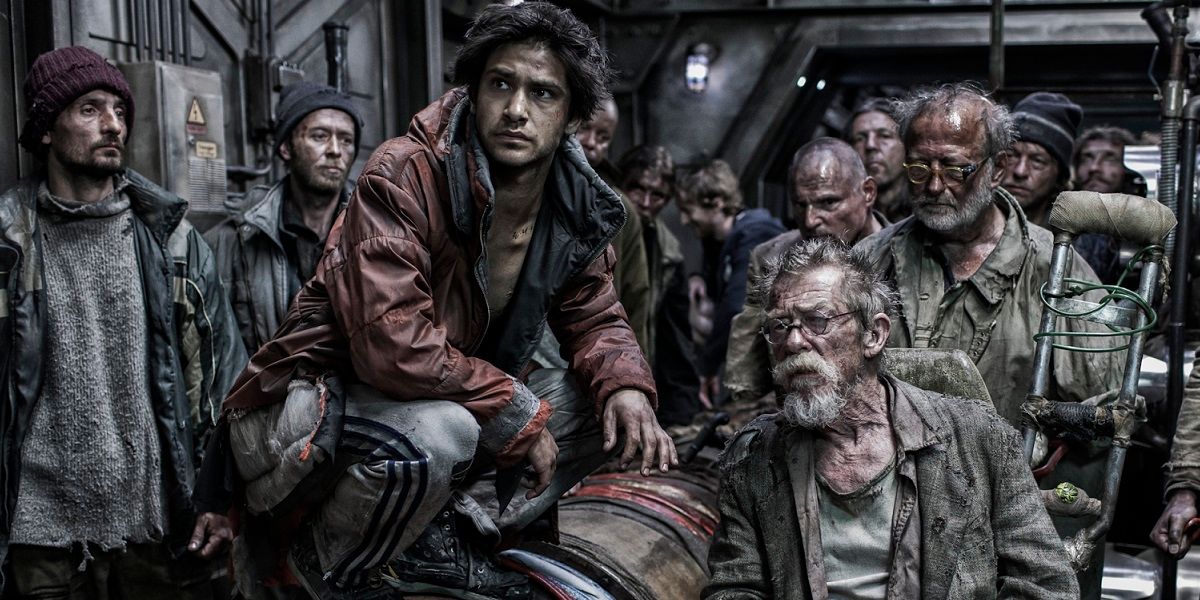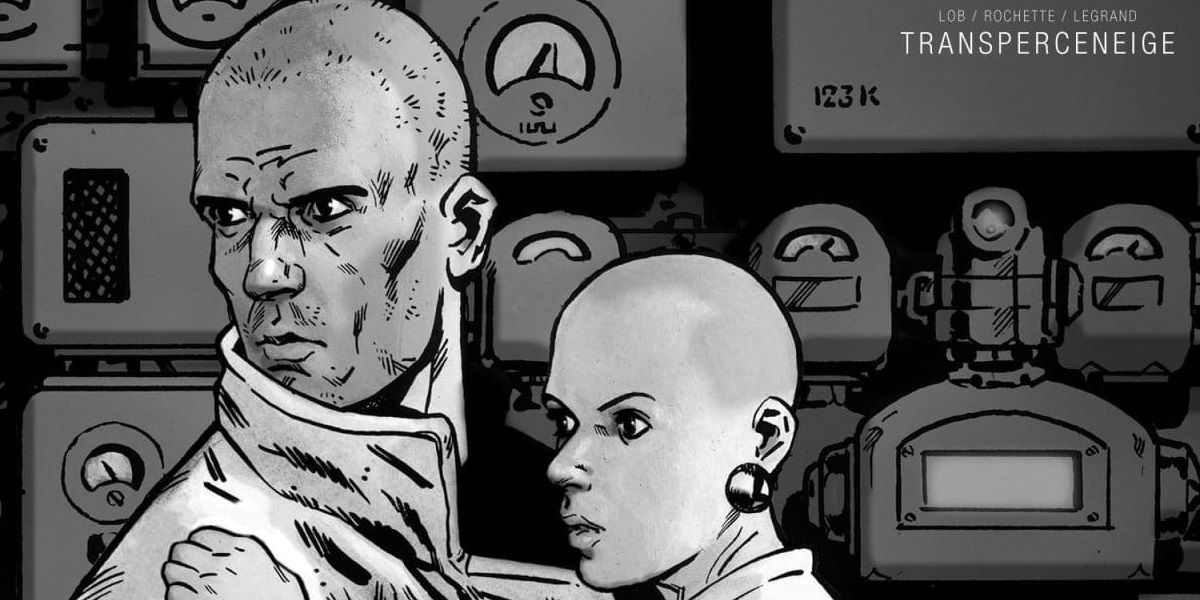Snowpiercer started life as the graphic novel “Le Transperceneige” in 1982 from writer Jacques Lob and artist Jean-Marc Rochette, and was followed by a prequel and 2 sequels, “The Explorers” and “Terminus”. When director Bong Joon-ho discovered it in 2004, he adopted it into the semi-popular film Snowpiercer in 2013. The book is also the source of the long-gestating Snowpiercer TV series from TNT, now slated for release in May 2020.
Both film and graphic novels use the same story, regarding passengers aboard a futuristic, perpetually moving train, as a violent analogy for class struggle in society. Although it's well known that the movie is merely “inspired by” the graphic novels, there are several aspects of the story that are better on the page, and some on film.
Movie is Better: Color
To keep printing costs down, “Le Transperceneige” was published in black-and-white, which renders the snowy scenes plain, and, well, very white. Rochette uses various shading techniques to give the novel some stark visuals, which helps highlight the atmosphere of this gloomy story.
Joon-ho’s film is in glorious color - not always of course, given the dark subject and the fact that (spoiler) 99% of the story takes place on a train. On-screen, snowy mountains and frozen cities (more on this below) can be vibrant and glaring, and indoor scenes are given the appropriate palette and warmth dictated by the plot.
Novel is Better - Romance
“Le Transperceneige” carries a hint of romance between the main characters, mostly fleeting moments of togetherness as they traverse the train carriages. This love affair is given little chance to grow or even make sense in the course of the story, but it exists and is likely consummated (more on that below too).
In the film, our hero Curtis (Chris Evans) isn't even given a romantic lead, so there is no amorous subplot to propel the story or give the characters depth. With the breakneck speed of both train and movie, there’s no time to fall in love.
Movie is Better - Life Outside the Train
The graphic novel surely intended to show next-to-nothing of the world outside Snowpiercer, focusing on the bleak life of the passengers that, as mentioned, suggests the path many of us live on earth. What's happening to the world encased in winter is inconsequential to the novel - other than to let the viewer know that disembarking the train leads to a painful, frozen death.
Not so for Joon-ho - as the train whizzes along we're treated to many fantastic CGI vistas of the frozen planet including cities, trestles, factories, and mountain ranges. In fact, the supposed inhabitability of the earth is a key plot point for the Snowpiercer film, so the audience needs an occasional glimpse out the window.
Novel is Better - Rated R
For a bleak, grimy movie, Snowpiercer doesn't garner an R rating for sex or gore - although it could for violence, including a nighttime hatchet battle in a crowded railcar. Both director Joon-ho and novelist Lob take pains to express the violent life that passengers - that is, all earth-dwellers - can experience just to survive.
However “Le Transperceneige” puts its main characters into several adult situations, as participants and observers, and doesn't shy away from illustrating the seedy underbelly of a crowded train/world. Whether the story is better off with these scenes is up to the reader, but they certainly add a vulgar quality to the graphic novel.
Movie is Better - Interesting Female Characters
Thankfully Hollywood has learned that strong female characters can be added to a story in a non-sexual fashion, and Snowpiercer is headed in this direction. Whereas “Le Transperceneige” had one female character of consequence, in Joon-ho’s film we get evil bureaucrat Mason (Tilda Swinton), rebellious passenger Tanya (Octavia Spencer), drugged-out waif Yona (Ko Asung), and duplicitous Teacher (Allison Pill).
It's also worth noting that the women in Snowpiercer play both Good Guys and Bad Guys - some like the Teacher we’re not so sure - and the graphic novel could have been enhanced with more depth here.
Novel is Better - Snow
If there’s one thing Hollywood struggles to produce realistically on-screen, it's snow. Whether it's white fuzz, potato flakes, refrigerated ice-crystals, or after-the-fact CGI, snow often looks fake on the big screen.
Artist Rochette does a good job showing us the frightening cold of the world outside the Snowpiercer, and draws snow judiciously in the graphic novel when pertinent. It's hard not to feel cold after paging through “Le Transperceneige”.
Movie is Better - Production Design
The casual reader may think there’s not much room for artwork on the printed page, but graphic novel fans know otherwise. Yet in “Le Transperceneige” there’s little richness on the panels, where the mundane look of a common train is emphasized. “Snowpiercer” features the work of Production Designer Ondrej Nekvasil, who has provided the look for films like The Illusionist, Underworld: Blood Wars, and several fantasy TV series.
Joon-ho takes advantage of the story to show a wide range of environments on the train carriages: sauna, greenhouse, nightclub, slum, and others. This arrangement adds more depth to the story, and a stronger illustration of the different surroundings we all pass through in our journey.
Novel is Better - Backstory
Director Joon-ho seems disinterested in telling the audience how the world came to an end, or what caused the cataclysm that sent people scrambling aboard the Snowpiercer. His film is focused on telling Curtis’ journey from carriage to carriage, class to class, and the “why” of the train’s voyage is less paramount. There’s a brief shot of the around-the-world path of the Snowpiercer, which is geographically illogical even before the new ice age arrived.
The graphic novel provides a very rough explanation for the train’s expedition, in flashbacks and simple exposition. Maybe the journey is more important than the destination for both stories, but it helps to give the audience a hint as to why the Snowpiercer is what it is.
Movie is Better - More Nuanced Characters
It may seem odd that a 2-hour movie does a better job of giving its characters depth and sympathy than a 110-page story, but many of the personalities in “Le Transperceneige” are caricatures drawn in broad strokes. There little mystery or nuance to any but the main characters, with gruff soldiers particularly interchangeable.
The new characters added by Joon-ho - and there are many that are different from the graphic novel - add a lot more weight and interest to the story, whereas in the book almost all the antagonists are lewd, alcoholic, vicious, or some combination thereof. The upcoming TV series should also be able to add more profound character arcs to the tale.
Novel is Better - Not an Action-Adventure Film
Snowpiercer is an action-adventure film with social commentary; “Le Transperceneige” is a social commentary that’s set aboard an unstoppable train. The film’s story necessarily ends when we get to the engine with Curtis, and contemplate his future and the train itself.
In the graphic novel, the trek to the engine is often perfunctory, with one character remarking “we’ve come this far, why not?” as his motivation. “Le Transperceneige” is not a hero’s journey, as so many Hollywood films are now, so those less interested in a triumphant, happy ending will enjoy the novel more.


